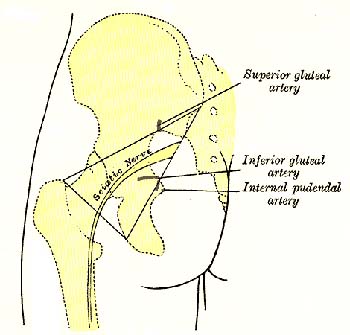Sciatica Treatment: Tips to Relieve the Pain
It is pain in the butt quite literally. It can also be a pain in the hip, the thigh, the lower leg, or even the foot. In fact, the condition known as sciatica can send pain shooting anywhere in your lower body. What is causing all the commotion is the sciatic nerve, which is not one but a group of nerves bound together in a single sheath. The sciatica nerve runs from your lower back down each leg all the way to the foot. When it is injured, inflamed, or irritated, it can produce pain at any point or every point along its route. The most common cause of sciatica is a herniated disk. Disks separate the vertebrae in your spine. The result is excruciating pain. On rare occasions, sciatica can result from other health problems.  Some are serious, such as diabetes, blood clots, and tumors. But others are minor. You can even get sciatic pain from sitting too long in an awkward position. So have your pain checked out before you proceed with self-care. Here are some tips that you can consider to adopt to relieve your pain. Some are serious, such as diabetes, blood clots, and tumors. But others are minor. You can even get sciatic pain from sitting too long in an awkward position. So have your pain checked out before you proceed with self-care. Here are some tips that you can consider to adopt to relieve your pain.
1. Adjust Your Seat
Most people position the car seat too far back when they drive. You put a lot of strain on your back when you have to stretch to reach your pedals. You should be able to press the gas pedal just by flexing your ankle. Your hips should be at about 90-degree angle, and your back should be in neutral, not bent, not perfectly straight, but comfortable.
2. Don't Get Crossed
You tend to cross the same leg all the time. That means you are always sitting on the same buttock, which puts a lot of pressure on the sciatic nerve on that side. Ideally, you should not cross your legs at all. But if you must, at least try to switch sides from time to time.
3. Go For Yoga
Practicing certain yoga exercises can help ease sciatic pain. It is recommended to try out this exercise. Lie on your back with your claves resting on the seat of a chair. Your hips and knees should be bent at about 90-degrees angles. Cross your arms over your chest and place your hands on your shoulders, not on your neck. Inhale, then begin a long, slow exhalation. During the exhalation, tilt your pelvis so that your lower back moves to the floor as you flatten your abdomen. Raise your shoulders 6 to 10 inches off the ground. Lower your right shoulder to touch the floor. Repeat, this time lowering and raising your left shoulder instead. Do this five to six times per side.
4. Take A Seat The Right Way
When you do have to sit, make sure that your posture does not make your sciatica worse. Your knees and hips should be bent at about 90-degree angles. Your weight should be on the ischium tuberosity - the sitting bones - and not on the tailbone.
5. Flex Your Pelvis
Pelvic tilts allow you to gently move the lumbar region of your spine, increasing circulation in the area. It is recommended to follow these instructions. Lie on your back with your feet on the floor and your knees bent. Tilt your pelvis so that your back flattens against the ground, then lift it up. Hold for 5 seconds and relax. Continue tilting and lifting and relaxing five to six times every hour when sciatica flares up.
6. Write Your Own Prescription
Nonsteroidal anti-inflammatory drugs (NSAIDs) such as ibuprofen remain the treatment of choice for sciatica. They can reduce any nerve inflammation caused by the pressure of a herniated disk. These medications won't cure your pain, but they will make it more tolerable.
7. Give Your Legs A Lift
Try to keep pressure off the lumbar region of your spine, from which most sciatica pain radiates. It is recommended lying on your back with your lower legs resting on a chair or a low table such as a coffee table. Your knees and hips should be bent at about 90-degree angles. Do this as needed for relief.
Raymond Lee Geok Seng is one of the foremost experts in the health and fitness industry and is a writer specializing in body health, muscle development and dieting. He has spent countless of time and efforts conducting research and share his insightful and powerful secrets to benefit men and women all over the world. He is currently the author of the latest edition of "Neck Exercises and Workouts." Visit http://www.bodyfixes.com for more information.
|